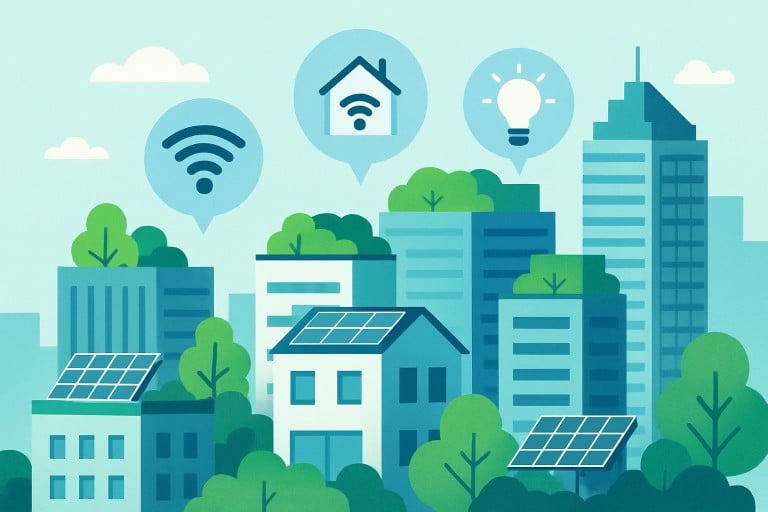Smart Home Integration
Smart home technology is at the forefront of urban living innovation. Residents increasingly expect the ability to control lighting, temperature, security, and even entertainment via apps and voice assistants. Features like smart thermostats that learn routines, automated lighting for safety and efficiency, and app-enabled access controls bring new levels of comfort and peace of mind. Home automation enhances daily convenience and plays a crucial role in optimizing energy use for a more sustainable lifestyle. Many modern Midtown Manhattan homes for sale now include integrated smart features as standard, reflecting the growing demand for connected, energy-efficient living.
Sustainable Design and Green Building
Sustainability drives much of the current momentum in urban home design. Developers and architects increasingly prioritize materials with low embodied energy and integrate features such as rooftop gardens, solar energy systems, and rainwater harvesting to reduce environmental impact. Green roofs provide insulation and foster biodiversity, while high-performance windows and energy recovery systems lower utility demands.
Mixed-Use Developments
The concept of mixed-use developments reframes urban living by integrating residential, commercial, and leisure spaces within a single neighborhood. This urban model minimizes commuting and traffic and fosters vibrant communities where essential services, retail, and cultural experiences are within easy walking distance. The result is a sense of place and connectivity, supporting city residents’ practical and social needs.
Co-Living and Shared Spaces
The rise in housing costs and an increasing desire for connection among urbanites have made co-living a popular solution. These shared living spaces feature private bedrooms and communal kitchens, living areas, and workspaces. By focusing on community-oriented amenities, these arrangements not only lower costs but also encourage interactions and diminish feelings of isolation, making them appealing options for young professionals, freelancers, and newcomers to the city.
Adaptive Reuse and Modular Construction
Adaptive reuse transforming former industrial or commercial buildings into stylish residential properties responds to housing shortages while conserving resources and preserving city history. Similarly, modular construction streamlines the building process through prefabricated components assembled on-site, which reduces material waste, shortens project timelines, and often yields cost savings. These innovative methods are crucial for expanding the city’s housing stock and delivering flexible, future-ready homes.
Wellness-Oriented Living
Urban design is increasingly prioritizing resident health. Features like fitness centers, yoga studios, and direct access to landscaped parks are being integrated into residential developments. Biophilic design, which brings natural elements like living walls and daylight-filled spaces indoors, lowers stress and improves cognitive function. These innovations create restorative environments right at home, underlining design’s pivotal role in physical and mental well-being.
Affordable Housing Solutions
With urban populations swelling, the demand for affordable options is urgent. Solutions include compact micro-apartments, greater support for public-private housing initiatives, and the thoughtful redesign of underused properties. These approaches aim to provide all essentials safety, comfort, community without the price tag traditionally associated with city living.
Flexible and Adaptive Living Spaces
Contemporary city apartments increasingly feature flexible layouts that adapt to changing needs, such as movable walls, multipurpose rooms, or fold-away furnishings. These spaces can transition between home offices, entertainment zones, or extra bedrooms, accommodating lifestyle changes like remote work, family growth, or hosting guests. This adaptability meets the demands of today’s fast-paced, ever-changing urban lifestyles.
As technology and design thinking continue to advance, urban homes are destined to deliver not just new experiences but also meaningful improvements in how we live. The homes of tomorrow will be smarter, greener, and more attuned to the well-being of their inhabitants, helping redefine what urban living can and should be for all.

